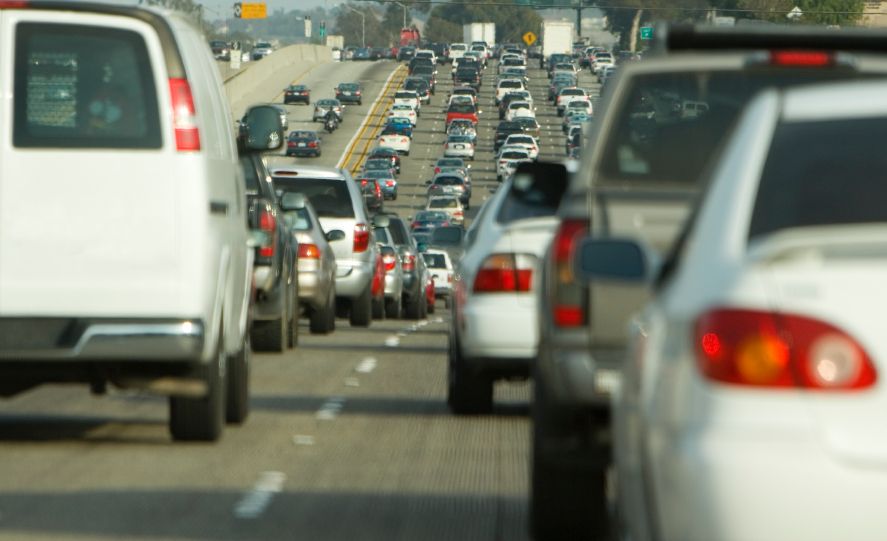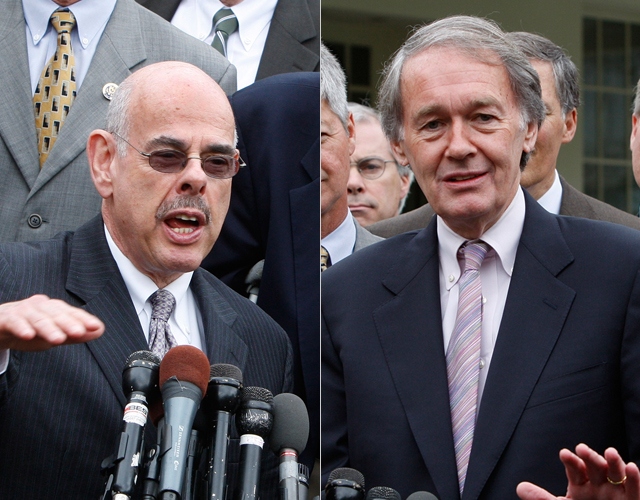In early June I’ll be speaking at a plenary session on climate politics at the America’s Future Now! conference organized by the Campaign for America’s Future. They asked me to write a post on the Waxman-Markey bill to kick off discussion in advance of the conference. The post is here, and reprinted below.
—–
The story of climate change, like the progressive story itself, is about the distance between what justice and prudence demand and what’s possible within the current constraints of power politics. It just so happens what when it comes to climate, the distance is unusually large.
The scale of the global shift that will be necessary to rebuild the world’s energy infrastructure, radically increase the intelligence of its resource use, and preserve and enhance its natural carbon sinks is beyond anything contemplated in human history. What’s worse, not only does it need to be done, but it needs to be done quickly, and over the objections of some of history’s most wealthy and powerful special interests. It is an almost perfect political problem.
This has given the issue a kind of Rorschach quality (the blot, not the masked vigilante). Against the scale of the task, virtually any effort today’s dysfunctional politics can cook up appears pathetically, criminally inadequate. Then again, against the baseline of total denial and hostility that defined the Bush years, virtually any effort can seem worth celebrating. Anything is better than nothing, but nothing is enough.
Which brings us to the Waxman-Markey climate/energy bill, aka the American Clean Energy and Security Act, or ACES.
There’s a great deal of anger and frustration among greenies this week. The original draft of ACES was a mixed bag: its “complementary policies” (the 75% of the bill devoted to energy stuff unrelated to cap-and-trade) were excellent, and its targets for climate pollution reduction were bolder than anticipated, but it allowed for far too many carbon offsets and left unsettled the key issue of how the pollution permits under cap-and-trade would be allocated. It original draft came out a couple weeks ago and since then the green world has struggled to come to terms with it.
After the draft proposal was released, the bill went into closed-door negotiations in the Energy & Commerce Committee, which is packed with legislators from carbon-intensive states. Republicans have, of course, decided on blanket opposition to any climate measures, so the negotiations were entirely between Dems from low-carbon (generally liberal, generally wealthy, service and white-collar) states and Dems from high-carbon (generally conservative, generally poor, coal and manufacturing) states. (The media has, for whatever reason, decided that the latter group deserves the appellation “moderates.”)
Everyone knew the ambitious original draft would get trimmed back in committee, but what emerged as the consensus bill last week was … mangled. In summary, everything that put real short-term pressure on industry was weakened. Whereas the IPCC and the UNFCCC recommend reaching 20% below 1990-level emissions by 2020, WM will reach just 4%. Whereas Obama, the CBO, Waxman, Markey, progressive groups, green groups, and anyone else who’s taken a substantive look at the question favors a system in which all the pollution permits are auctioned off (to raise revenue that can cushion low-income ratepayers, invest in clean energy, and deny polluters windfall profits), the WM bill now gives away 85% of permits, most of which don’t shift to auctions until after 2030. Coal utilities, “clean coal” projects, oil refineries, energy-intensive industries like steel — they all get huge handouts.
Before the bill mandated that utilities ramp up renewable energy to 25% of their portfolio by 2025, and increase efficiency savings to 15% by 2020; now those two standards have been combined, to 20% total by 2025, 5% of which can be efficiency. Before the bill had tough performance standards on new coal plants; those have been weakened. Before the bill had a low-carbon fuel standard which would have blocked a rush to tar sands oil and other filthy new sources of fossil fuel; that’s gone entirely. Before the bill had huge money for “clean coal”; now it has extra-huge money.
In short, the revised bill is triumph for coal patch Dems and big business and a punch in the gut for greens. It immediately came in for criticism from environmental groups, some of which have withdrawn their support entirely. There’s real debate among greenies whether this bill would do anything to spur action in the short-term; whether it would address the pressing issue of existing coal plants; whether it would completely defang the EPA.
Then again.
Al Gore still supports the bill. Paul Krugman still supports it. Obama still supports it. What do they know (or think) that, say, Greenpeace doesn’t?
It comes down to how you see the big picture and the larger forces of history — that Rorschach blot. Those who have turned against the bill think there will be one chance to do this; they cite the Clean Air Act to show how crappy compromises get cemented in place in legislation and become very, very difficult to reopen. They’re worried that if a weak bill is put in place, by the time the country seriously revisits it it could well be too late. It blows the one chance.
The bill’s supporters think history is on their side. They see the most important goals as establishing a long-term declining cap on CO2 (the 2030 and 2050 targets remain strong in W-M), getting a carbon trading system up and running, and above all shifting off the status quo trajectory. They also point out that the U.S. desperately needs something to take to the international climate talks in Copenhagen in December. Only a show of good faith will get the rusty gears of multilateral negotiation turning again, and that process, too, cannot wait. As time passes, they say, climate change will hit harder, increasing political pressure to strengthen the system. States will accelerate their own programs; clean businesses will gain size and lobbying muscle; everyone will get much more serious about the problem and cognizant of the opportunities. This is the beginning of a journey that will only gain, not lose, momentum.
Who’s right? It depends on what time of day you ask me.
All I know is, today the Obama administration is unveiling new fuel efficiency standards for vehicles. We should have had these in place long ago; they’re still not as good as other developed countries’; the emissions they’ll reduce will only be a tiny fraction of what’s needed.
But it’s a step. And if a small step is all you can take, I guess you take the small step.



